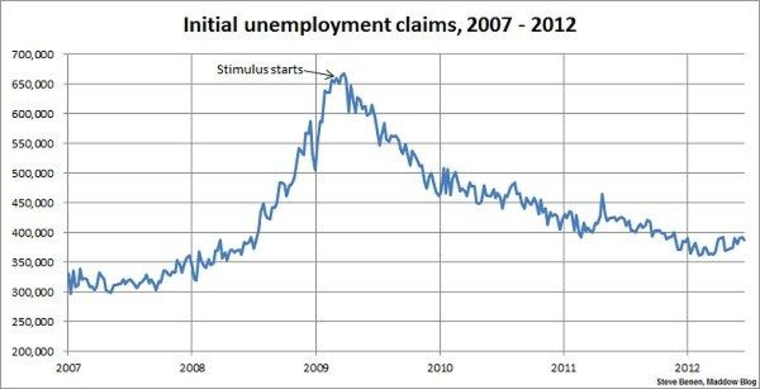Given the last few months, it's something of a relief when initial unemployment claims drop at all, and with that in mind, I'm glad today's report from the Department of Labor shows a slight improvement.
But as has been the case quite a bit lately, the drop comes from a revised increase, and remain at a discouraging level.
The number of Americans who filed requests for jobless benefits fell by 6,000 last week to 386,000, the U.S. Labor Department said Thursday. Claims from two weeks ago were revised up to 392,000 from an original reading of 387,000. Economists surveyed by MarketWatch had projected claims would fall to a seasonally adjusted 385,000 in the week ended June 23. The average of new claims over the past four weeks, meanwhile, edged down by 750 to 386,750, remaining near a seven-month high.
To reiterate the point I make every Thursday morning, it's worth remembering that week-to-week results can vary widely, and it's best not to read too much significance into any one report.
In terms of metrics, when jobless claims fall below the 400,000 threshold, it's considered evidence of an improving jobs landscape, and when the number drops below 370,000, it suggests jobs are being created rather quickly. We've only managed to dip below the 370,000 threshold once in the last 12 weeks, and for five consecutive weeks, we've seen 380,000 or more.
If our politics were in any way tied to reality, numbers like these might lead Congress to think it'd be a good idea to pass a jobs bill.
And with that, here's the chart showing weekly, initial unemployment claims going back to the beginning of 2007. (Remember, unlike the monthly jobs chart, a lower number is good news.) For context, I've added an arrow to show the point at which President Obama's Recovery Act began spending money.
